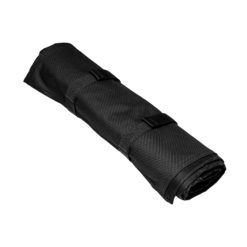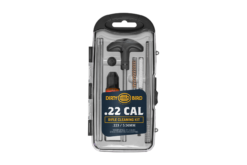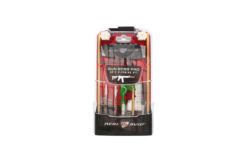AR-15 Basics, AR-15 Cleaning Kits
AR-15 Cleaning Kits: How to Clean Your Barrel, Avoid Mistakes
Table of contents
Maintaining your AR-15 is essential for reliability, accuracy, and longevity, however, the simple fact is that a lot of folks don’t do the cleaning that they should be simply because they don’t have a cleaning kit, or the basic info on what to clean and how. This is unfortunate, as a quality AR-15 cleaning kit prevents corrosion, ensures smooth operation, and helps you identify worn parts before they fail. However, cleaning the barrel demands precision and come common sense. There is such thing as trying to make your rifle too clean. Overcleaning or using improper tools, like stainless steel cleaning rods, can damage your rifle. This guide covers how to clean your AR-15 barrel, how often to do it, the risks of overcleaning, whether the AR-15 is self-cleaning, and why a compact gun cleaning kit is vital.
Why You Need a Good AR-15 Cleaning Kit
A dependable AR-15 cleaning kit safeguards your rifle against rust, maintains performance, and supports proactive maintenance. Many of today’s kits are portable, organized, and include specialized tools for rifles, making them perfect for home or field use. These kits streamline cleaning and reduce the risk of using improper tools that could harm your firearm’s components.
How to Clean an AR-15 Barrel
Step 1: Prepare a Safe Workspace
Before starting, set up a clean, well-lit area with enough space to organize your tools. Lay down a mat or towel to catch small parts and prevent scratches. Ensure your AR-15 is unloaded: remove the magazine, clear the chamber, and visually inspect to confirm no ammunition is present. Safety is paramount.
Step 2: Gather Your Cleaning Kit
A quality AR-15 cleaning kit should include a bore brush, chamber brush, cleaning patches, a cleaning rod (preferably coated or flexible, not stainless steel), solvent, and lubricant. The Real Avid kits are ideal, offering portable, rifle-specific tools. Avoid stainless steel rods, as their hardness can scratch the barrel’s rifling if misaligned, as discussed earlier.
Step 3: Disassemble the Rifle
Break down your AR-15 to access the barrel. Separate the upper receiver from the lower receiver, remove the bolt carrier group, and detach the charging handle. If needed, consult your rifle’s manual for specific disassembly instructions. Keep parts organized to simplify reassembly.
Step 4: Clean the Bore
Start with the barrel’s bore, where carbon and copper fouling accumulate. Attach a bore brush to a coated or flexible cleaning rod from your kit. Apply a firearm-specific solvent to the brush, then insert the rod into the chamber end of the barrel, pushing it toward the muzzle. This direction protects the muzzle crown, which is critical for accuracy. Run the brush through the bore 8-10 times, ensuring full contact with the rifling.
Next, replace the brush with a patch holder. Thread a solvent-soaked patch through the holder and run it from chamber to muzzle. Repeat with fresh patches until they emerge clean, indicating the bore is free of fouling. Follow with dry patches to remove residual solvent, ensuring no debris remains.
Step 5: Clean the Chamber
The chamber requires special attention, as carbon buildup can affect cycling. Use a chamber brush from your cleaning kit, applying solvent and gently rotating it in the chamber to loosen residue. Avoid excessive force, as over-scrubbing can damage the chamber’s finish, as noted in the overcleaning section. Wipe the chamber with a solvent-soaked patch, then dry it thoroughly with clean patches.
Step 6: Inspect the Barrel
With the bore and chamber clean, inspect the barrel for wear or damage. Use a flashlight to check the rifling and crown for scratches, pitting, or erosion. If you notice irregularities, consult a gunsmith, as these can affect performance. Regular inspections during cleaning help catch issues early, preventing costly repairs.
Step 7: Lubricate the Bore
Apply a light coat of firearm lubricant to a clean patch and run it through the bore to protect against corrosion, especially if storing the rifle. Use only a thin layer—excess oil attracts dirt, as mentioned in the mistakes to avoid. If you plan to shoot soon, run a dry patch through the bore to remove the oil, ensuring no residue affects your first shot.
Step 8: Reassemble and Function Check
Reassemble your AR-15, ensuring all components are properly seated. Perform a function check: cycle the action manually, engage the safety, and pull the trigger (with no ammunition) to confirm everything operates smoothly. Store your cleaning kit and rifle securely.ber to muzzle prevents damage to the crown, which is essential for bullet stability and accuracy.
How Often Should You Clean?
Clean your AR-15 after every range session (200-500 rounds) to remove carbon and prevent corrosion, using a portable kit for quick upkeep. Conduct a thorough cleaning every 1,000-2,000 rounds or after heavy use, such as intense training days. For long-term storage, clean and lightly oil the barrel. Overcleaning, as detailed below, can harm the barrel, so clean only when needed to preserve the rifle’s condition.
The Dangers of Overcleaning
Overcleaning an AR-15, especially the barrel, can cause significant damage. Repeated scrubbing with bore brushes or rods can erode the rifling—the grooves that spin bullets for stability. Worn rifling reduces accuracy, causing inconsistent bullet flight. Excessive cleaning may also create micro-scratches in the bore or chamber, which trap debris, promote fouling, and accelerate wear. These scratches complicate future cleanings, as carbon adheres more readily to damaged surfaces.
Frequent disassembly and aggressive cleaning can stress components like the bolt carrier group or gas system, leading to premature wear. For instance, over-scrubbing the chamber may degrade its finish, potentially affecting reliability. Overcleaning also wastes time, as the AR-15 is built to handle moderate fouling without immediate performance drops. A balanced cleaning schedule maintains functionality while protecting the rifle’s longevity.
Is the AR-15 a Self-Cleaning System?
The AR-15 is sometimes called a “self-cleaning” system, but this is misleading. Its direct impingement gas system channels hot gases from fired rounds into the receiver to cycle the action, carrying carbon and residue to the bolt carrier group and chamber. Some believe this gas flow clears debris, reducing cleaning needs. In truth, while the gas system keeps the gas tube relatively clear, it spreads fouling to critical areas, which can cause malfunctions if ignored.
Piston-driven AR-15s produce less fouling in the receiver by redirecting gas to a piston, but carbon still builds up in the barrel and chamber. No AR-15 is truly self-cleaning—neglecting maintenance risks corrosion, reduced reliability, and failures, especially in demanding conditions or high-round-count scenarios. The AR-15’s robust design tolerates moderate fouling better than some firearms, allowing it to fire hundreds of rounds without immediate issues, but regular cleaning with a quality AR-15 cleaning kit is necessary to prevent long-term damage and ensure consistent performance.

Mistakes to Avoid When Cleaning
Improper cleaning can damage your rifle. Cleaning from the muzzle end risks harming the crown, which affects accuracy. Over-oiling the bore attracts dirt and carbon, leading to buildup. Household solvents like WD-40 or PB Blaster should be avoided, as they can damage finishes or leave harmful residues. A significant error is using stainless steel cleaning rods. Their hardness can scratch the bore or rifling if misaligned, reducing accuracy and complicating future cleanings. Coated rods or flexible cables, like those in the Real Avid AR15 Field Cleaning Kit, are safer and equally effective.
Neglecting to inspect components during cleaning is another mistake. Maintenance is an opportunity to check for wear, such as cracked bolts or worn gas rings, to prevent failures. Using excessive force with any tool can also damage surfaces, so apply gentle, controlled pressure when scrubbing or patching.
Why Stainless Steel Cleaning Rods Are Risky
Stainless steel cleaning rods are durable but can harm AR-15 barrels. Their hardness makes them prone to scratching the rifling or throat if misaligned, particularly in field conditions where precision is challenging. Such scratches degrade accuracy and increase fouling retention. These rods also risk damaging the muzzle crown during insertion or removal, disrupting bullet stability. Softer options, like coated rods or flexible cables minimize these risks while remaining effective and easier to use, especially in tight spaces.
Conclusion
A quality AR-15 cleaning kit is crucial for keeping your rifle reliable and accurate, but proper technique is just as important. Clean carefully, avoid overcleaning, and opt for the proper tools to protect your barrel’s rifling and crown. Recognize that the AR-15 is not self-cleaning and regular maintenance prevents fouling-related issues and ensures peak performance.
Clean your AR-15 after every range session (200-500 rounds) for light maintenance to remove carbon and prevent corrosion. Perform a deep clean every 1,000-2,000 rounds or after heavy use. For storage, clean and lightly oil the barrel. Avoid overcleaning, as it can wear the rifling and reduce accuracy.
Yes, but sparingly. Apply a light coat of lubricant to the bore with a patch for storage to prevent corrosion. Wipe the bore dry with a clean patch before shooting to avoid buildup, as excess oil can attract dirt and affect performance.
The AR-15 is highly durable with proper care, thanks to its robust design. For even lower maintenance, piston-driven rifles like the HK416 redirect gas away from the receiver, reducing fouling, but they’re more expensive. Regular cleaning with a quality kit keeps any AR-15 reliable.
Yes, improper cleaning, such as aggressive scrubbing or using hard tools, can scratch or erode the rifling, reducing accuracy. Clean gently with coated rods or cables, like those in the Real Avid AR15 Cleaning Kit, and avoid overcleaning to protect the barrel’s rifling.
No, PB Blaster is a penetrating oil, not a gun cleaner, and can damage your AR-15’s finish or leave harmful residues. Stick to firearm-specific solvents from a dedicated cleaning kit to ensure safe and effective maintenance.





